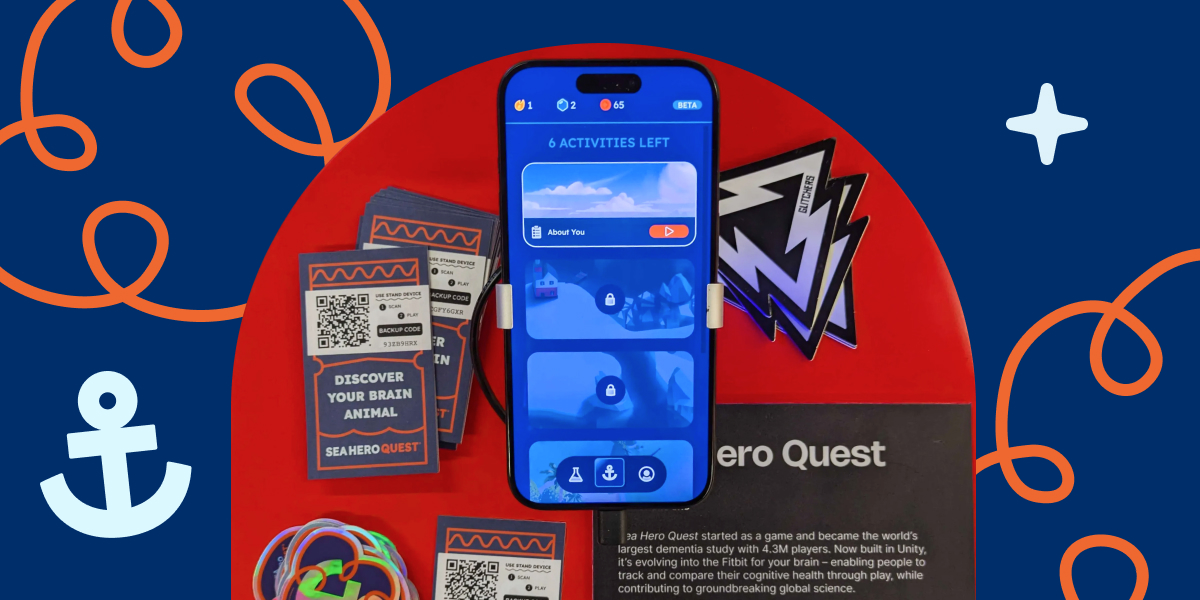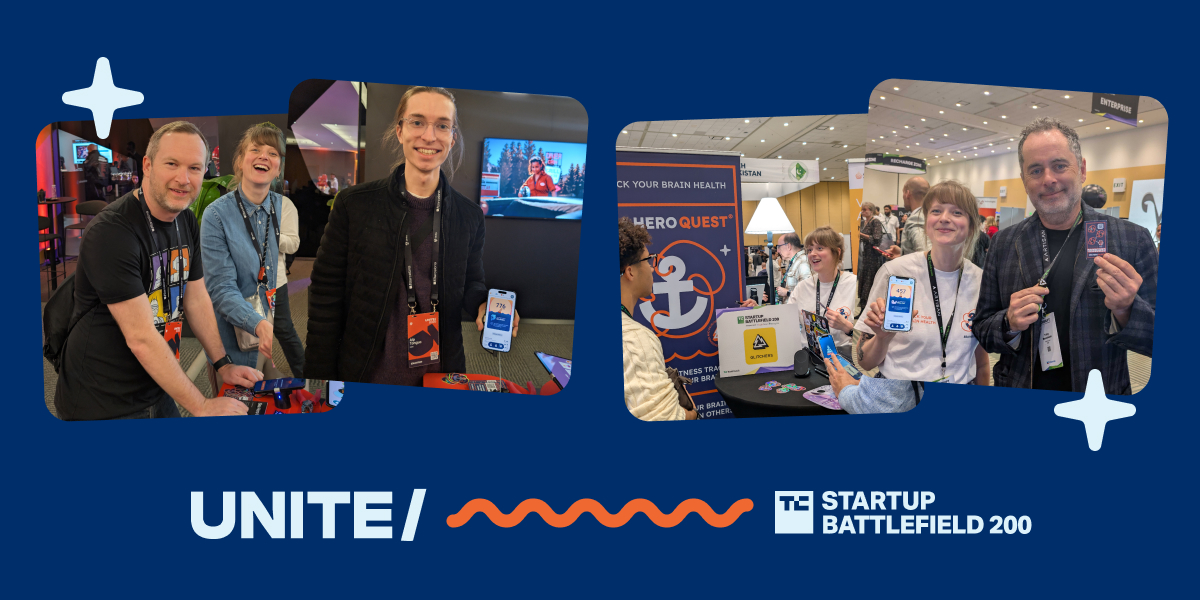With bad wifi conditions and a mixed familiarity with games, 152 people navigated their little boat across choppy waters to reveal their brain score.
We took our game Sea Hero Quest, which measures your spatial navigation to two totally different global events, just one month apart:
- Tech focused: Techcrunch Disrupt 2025 in San Francisco
- Game focused: Unity Unite 2025 in Barcelona
Same game, same pitch, same content. The idea of comparing your "brain score" (your navigation skill) to the rest of the world really resonated. People kept coming back with their friends.

Here's what we learned:
A Conference Brain Underperforms
When people started playing, the data gave us an immediate insight:
Underperformance: Players on the show floor generally navigated similarly to our global benchmark, but they were much worse than the average performance for their age, gender, and country.
Why the dip? Could it be jetlag, lack of sleep, or a depleted "social battery" from intense networking? It's a huge reminder that real-world factors can crush lab conditions and longitudinal data is really important to discover a true baseline.
It makes me really think about the difference in performance during lab based cognitive assessments and how playing from your living room would be much more natural assessment.
Improvement Mindset: A lot of engaged players didn't get the high scores they were expecting. But, instead of quitting, they were motivated to improve. They didn't care about the low score; they just wanted to do better in the next game.
The Trajectory Path: A Hidden Gem
One of our biggest "Aha!" moments came from watching people interact with a simple visualisation: the trajectory path at the end of each level. This showed them exactly where they went during the session.
We saw people huddled around the screen, communicating their weak points:
"I swore if I made this turn, I’d end up at checkpoint 2, but I can see right here, I was lost."
This confirmed the power of a simple, visual tool. It gave people a concrete way to talk about their performance: their navigation strategy, without needing fancy scientific terms.

Event Battle Card
Comparing showfloor product demo of Sea Hero Quest at TechCrunch Disrupt vs. Unity Unite (days 1 and 2).
| Metric | TechCrunch Disrupt | Unity Unite | Verdict |
|---|---|---|---|
| Est. Crowd Size | ~5,000 | ~1,500 | TC was the bigger event |
| Total Levels Played | 213 | 346 | Unite played 62% more |
| Unique Players | 52 | 66 | Unite had more engagement |
| Engagement | 4.1 levels per player | 5.2 levels per player | Unite players stayed longer |
| Avg Duration | 32.53s | 35.34s | TC players were ~8% faster |
| Avg Path Length | 111.40 | 112.50 | TC players were slightly more efficient |
| Shortest Run | 8.22s | 8.43s | TC had the fastest speedrunner |
| Longest Struggle | 7m 13s (Path: 791) | 2m 31s (Path: 373) | TC had the most significant "Lost Player" |
| Top Demographics | USA (56%) UK (10%) |
Spain (17%) UK (15%) USA (14%) |
TC = US Centric Unite = Diverse EU Mix |
| Gender Balance | Male (34) Female (17) |
Male (55) Female (11) |
Unite was a reflection of the Male dominated games industry |

Key Takeaways
What this whole experience taught me is: Go out there and test things - even if they feel rough around the edges. Don't wait for "perfect."
Get your product in front of real people under real pressure and you might surprise yourself!
- Your product is way more solid and intuitive than you thought.
- You might be building too much - and the simplest features might be the real hero.
Both events have lit a fire under us. We're incredibly excited to get this back into the hands of the public and deliver on the HUGE next part of our mission: to help people track their brain health.
What can you do to help?
- Join our public waitlist: our subscription beta starts Q1 2026
- Share this post with your network


